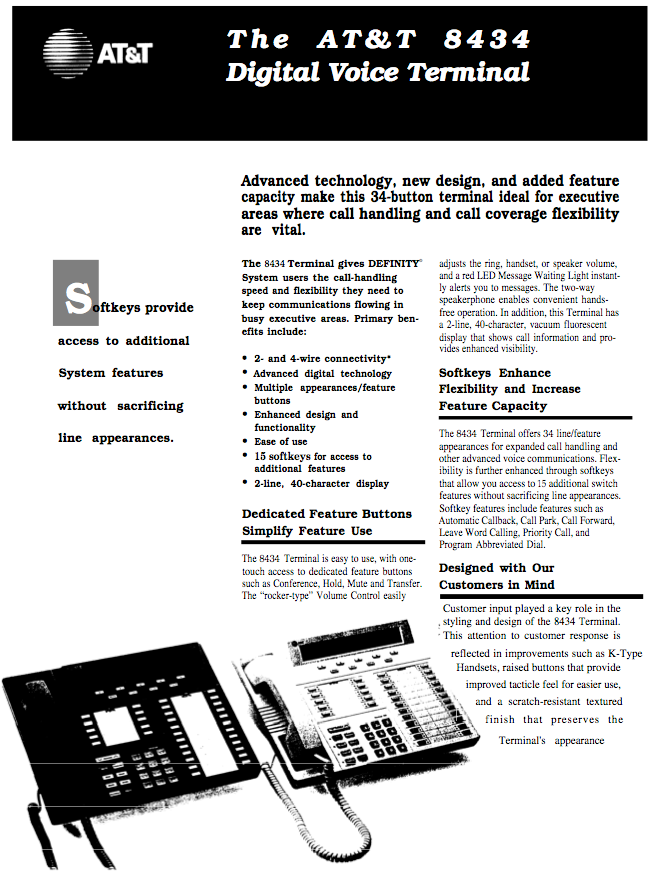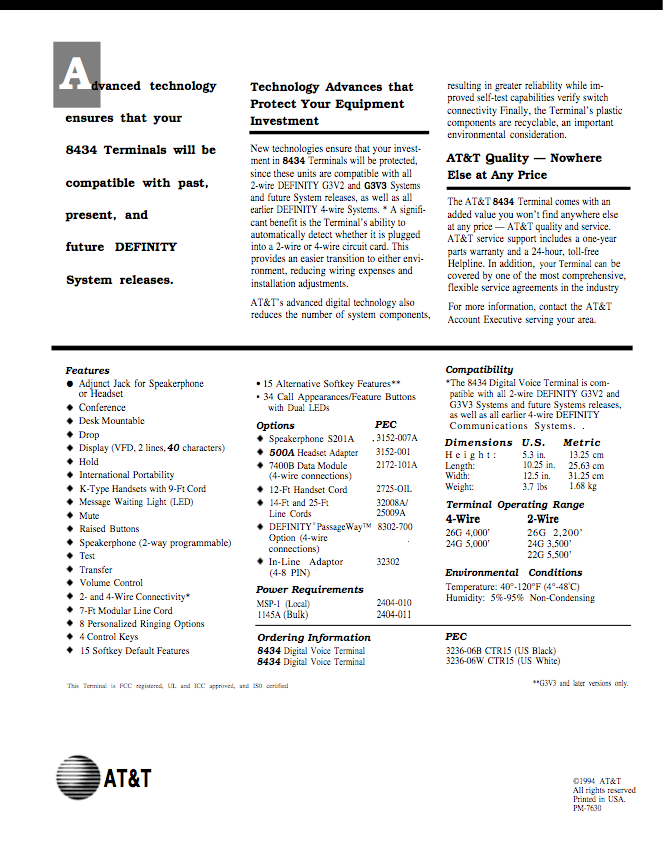The Museum is having a low in terms of new features. Here we go with, Stretch, Stretch and Stretch by finding something to fill up for the lost posts. I thought since the 8434 telephone from Avaya was one of the attractions to this site, that I’d post it’s brochure from the time I found deep on the Avaya hosts.
The copyright is from 1994 from AT&T and it doesn’t indicate the DX suffix. The 7400s were well popular in the early 1990s. The most funny thing about the world of Avaya Red (then AT&T) was most phones used were within that decade from the mid 80s to mid 90s. Many Avaya Blue shops still had those wedge SL-1 telsets in production even past the 21st Century. The MET sets (that kinda had the resemblance the first gen SL1 sets) were made around the same time, mid 1970s. Not sure if AT&T had aggressive buyback offers or just simply those quasi digital sets couldn’t do things like multiple lines.
As much as I liked the 7400s because it shared the Merlin shell; the 7400s were kinda like the Ciscos of the 1980s. Overpriced and underperformed. Most first gen sets (made from 1984 to like 1988) had no ability for integrated speakerphone (known as listening only); displays were add ons, and it was known for its proprietary “R” handset and tactile buttons other than the dialpad. Volume was a dial wheel, as well as it’s display contrast. Isn’t that interesting, analog controllers to a digital telephone? By about 1988, the BIS (Built in Speakerphone) series appeared for both Merlin and System 75/85 users, as well as hard buttons for line and features, and models for call center and dedicated display (7406D and 7407.) For the people who didn’t like the futuristic looks, the 1990s came with something that resembled more like an “office telephone” – Enter the 8400 Series.
Similar to the whole AUDIX saga, AT&T’s documentation was very lousy from the 84 breakup to the Lucent spinoff. Because information is very scarce, I’m going to bet the 8400s were introduced to the market around 1993/94; and not 1990. If I am wrong on the year of introduction; then it would be safe to say; by that time; these sets were starting appear on desks as time went on.
To prevent the reader from being constantly bombarded with repetition of history, please click on this link for additional information



